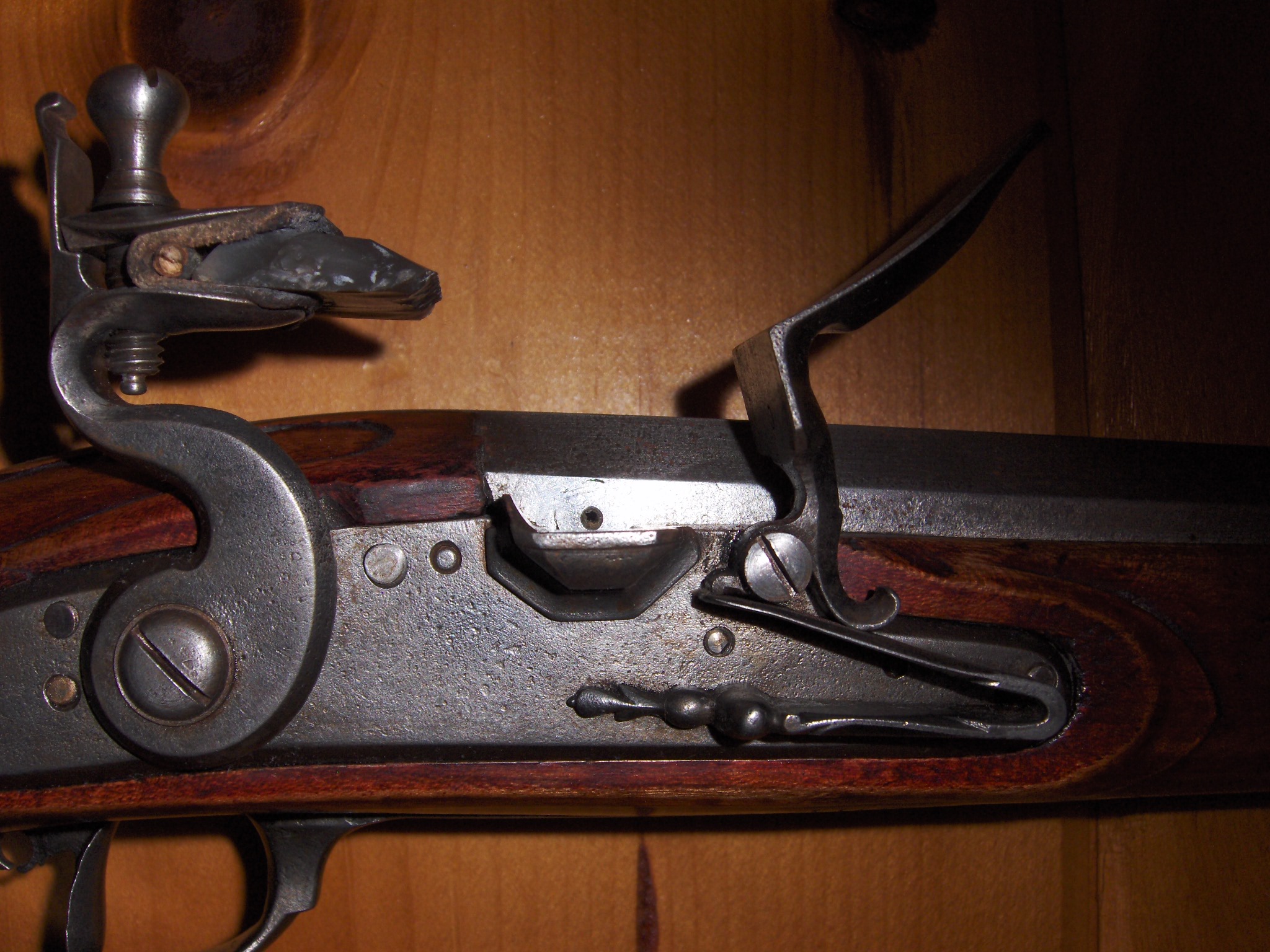- Joined
- Dec 25, 2011
- Messages
- 8,804
- Reaction score
- 3,799
Were colonial (American built) locks ever or often fitted with bridled frizzens?


There are also locks that have the internal bridle for the tumbler, but without the branch reaching back to the sear screw.I have pictures of a Ketland lock, ca. 1770-1800 that is like this, and if I recall correctly (and I may be wrong), some of the earlier French gunlocks in Canada also had the "half bridle" on the tumbler...
Were colonial (American built) locks ever or often fitted with bridled frizzens?

some were and some were not. it came down to cost. A double bridle lock carried a higher price. Some locks had bridles welded on (very complicated).
F&I war guns mostly didn't have bridled frizzes, however they did use a large pivoted screw.
Nicholas,
Please don't think I'm trying to pick on you, but that is a bit too much of a generalization. British and French Military Firelocks had double bridle locks on many, if not most of their newer made Firelocks by then. British Ordnance had changed to double bridle locks as per the P1740 locks. Civilian medium to high quality locks had changed to mostly double bridle locks by the FIW as well.
It is true that Trade Gun locks and low quality locks continued to be made with no Pan Bridle during and later than the FIW, though. Also, it seems that German locks didn't change over as quickly to Pan Bridles as Britain or France, so you still see some Single Bridle locks from them during that period.
Gus
One major flaw with British muskets I could never understand was why use an integral pan, and not a detachable plan? this method allowed the French Charleville's to be continuously upgraded for use almost to the 1850's. Brown Bess conversions and upgrades were sloppy and never very well designed.
The more I have studied the 18th century British Ordnance Department, the more I shake my head sometimes at things they would spend money for that didn't really need it and in other cases were downright cheap when they should not have been.
Since the British only considered the Service Life of an 18th century Military Musket to be 8 - 12 years, I imagine that's why they didn't spend the extra money on detachable pans, but I can't document that.
Of course I'm not sure if it is still this way today, but on two trips to the UK and visiting Warwick Castle on both trips, I was very surprised to find so many Single Bridle Flintlock Sporting Guns on display in their Armoury. (I was at first disappointed to find very little Medieval Period weaponry, but this made up for it.) Most those were high quality guns of the 1720's and 30's.
Gus
P.S. On a personal note, I hope there is nothing seriously wrong with you in hospital.
Enter your email address to join: